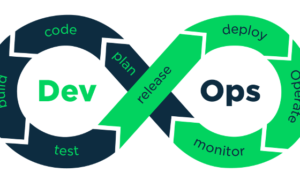Welcome to an enlightening blog post that explores the incredible potential of solar power in transforming economies and lives in developing countries. As we delve into the promising world of renewable energy, specifically solar power, get ready to be inspired by stories of innovation, resilience, and sustainable progress. From illuminating remote villages to providing clean electricity for small businesses, solar power is proving to be a game-changer for those who need it most.
Introduction to Solar Power
Solar power stands as one of the most promising forms of renewable energy. With solar photovoltaic (PV) technology converting sunlight into electricity, it offers a clean and sustainable source of energy.
The affordability of solar PV is increasing, making it a viable option for powering homes and businesses in developing countries. Beyond providing clean and reliable energy, solar PV is instrumental in empowering communities and driving economic development.
The advantages of solar power in developing countries are numerous. It helps offset carbon emissions, improves air quality, and grants access to clean energy to those in need. Additionally, solar power can create jobs and stimulate economic growth.
According to the International Renewable Energy Agency (IRENA), the global solar PV market could generate up to six million jobs by 2030. Furthermore, the UN Development Programme (UNDP) estimates that investing in renewable energy creates three times more jobs compared to fossil fuels.
Solar PV plays a critical role in transitioning to a low-carbon future. By increasing access to clean energy, it helps reduce poverty and fosters more resilient communities.
Challenges Developing Nations Face Accessing Electricity
Energy poverty poses a significant challenge for many developing nations. According to the World Bank, an estimated 1.2 billion people worldwide lack access to electricity. This lack of access hinders economic opportunity, quality of life, and even presents health hazards.
In addition to energy poverty, developing nations encounter obstacles in terms of infrastructure and financing when accessing electricity. Many countries lack the necessary infrastructure to support large-scale electric grids, and those with grid infrastructure often grapple with outdated and inefficient systems. Accessing capital for building new power plants or upgrading existing infrastructure proves challenging for developing nations.
Solar power offers a potential solution to these challenges, as it is a clean, renewable source of energy that can be easily integrated into existing infrastructure. Its relative affordability also makes it a more feasible option for many developing nations.
Benefits of Solar Power for Developing Countries
Solar power provides a clean, renewable energy source that can power homes, businesses, and communities in developing countries. Beyond improving quality of life, it also drives economic development and reduces dependence on fossil fuels, which contribute significantly to climate change. Additionally, solar power creates jobs and spurs economic growth in these regions.
Examples of How Solar Energy is Empowering Economies in Developing Nations
Solar energy is already contributing to economic development in developing countries across the globe. Here are some examples of how solar is empowering economies in these nations:
Job Creation: Solar power projects create new employment opportunities in developing countries, contributing to local economies.
Access to Clean Energy: Solar installations provide clean, reliable electricity, which stimulates economic growth and enhances livelihoods.
Enhancing Education and Healthcare: Solar-powered facilities, such as schools and clinics, improve access to education and healthcare, boosting human capital development.
Environmental Benefits: Solar energy reduces emissions of harmful pollutants, improving air quality and public health.
Alleviating Poverty: By offering an affordable, renewable energy source, solar power plays a role in poverty alleviation and spurring economic development.
Barriers to Adopting Solar Technology in Developing Countries
Several barriers hinder the adoption of solar technology in developing countries. High upfront costs for solar panels and equipment present a major obstacle. Maintenance costs can also be a concern for solar installations. Additionally, many developing countries lack the infrastructure to support solar panel installation and operation. A lack of awareness about solar power and its benefits further deters people in developing countries from considering it as a viable energy option.
Solutions to Overcome These Barriers
To overcome the barriers to solar power adoption in developing countries, several solutions have been proposed. Providing subsidies or financial support can encourage the adoption of solar power. Increasing awareness through education and training programs is vital in promoting solar energy. Improving access to financing for solar power projects is necessary. Moreover, creating an enabling environment for solar technology development and deployment will further facilitate its adoption.
Conclusion
Solar power is a tremendous asset for developing countries, empowering economies, reducing energy costs, and creating jobs. Furthermore, it offers a clean, renewable energy source with long-term environmental benefits. By investing in solar power projects, we can support communities while making a positive impact on global climate change efforts. Renewable energy sources like solar power represent our best chance at creating a sustainable future for all of us. Together, we can illuminate the path toward a brighter, cleaner, and more equitable world.



































